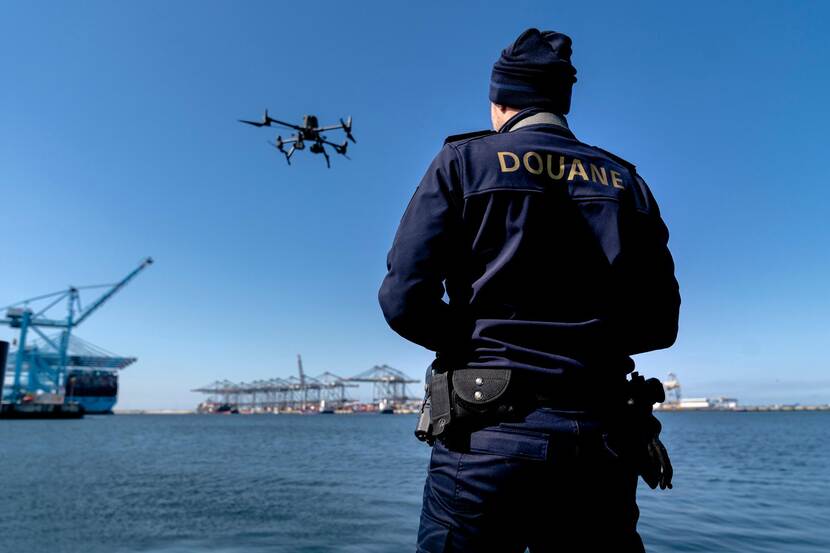Drones: eyes in the sky
Articles
Long rows of dunes, patchworks of industrial sites and mazes of containers at terminals: monitoring the coast is not always easy. That is despite all the customs officers and cameras and is why we also deploy drones with day and night vision. At the moment, we only do this in the port of Rotterdam. Darko Brodic, the Customs drone team manager, tells us about the drone surveillance.
"We face all kinds of smuggling methods," says Brodic. "Such as infiltrators, criminals who break into premises to get drugs from containers. This can, of course, be dangerous: for customs officers, but also for other people in the area. And it causes logistical delays. It takes a lot of time for customs officers to find out where suspicious persons are. You can't see everything from the ground. That is why I thought a few years ago: how can we make this kind of location more visible? The answer was obvious: from the air. And that soon took me to drones. They could be an excellent addition to our set of enforcement tools."
Brodic submitted his idea to the department that deals with innovation, and was allowed to take it from the drawing board to the field. "That involves many steps. You have to select and train pilots, go through a tender process for the drones and draw up an operations manual. It also takes a lot of coordination with the Human Environment and Transport Inspectorate. As an aviator, you will use airspace and have to abide by all kinds of rules. Fortunately, many people inside and outside the organisation have helped." The result is impressive: a real Customs drone team, with state-of-the-art equipment.
The experiences with the flying cameras have been positive so far, says Brodic. "We can see everything clearly at night and during the day, and we see more than before. The good zoom function allows us to take razor-sharp photos even from a great distance. Also important: you yourself are far away, so as good as invisible. This is not only useful when carrying out surveillance, but also when doing reconnaissance work. Our team is also sometimes deployed for an arrest by our colleagues from the Special Assistance Team."

The images are recorded according to a fixed protocol. We delete everything that is 'compliant', i.e. where nothing is suspicious. We keep recordings that show suspicious things or a 'red-handed' act. This may serve as evidence. If there happen to be faces or outlines in a recording of the 'public', they are blacked out or otherwise made unrecognisable. That is how we protect the rights and privacy of members of the public.
The drone has proven to be a useful tool for Customs in surveillance and detection in a short time. At Customs Rotterdam Port, more employees are being trained as drone pilots. Colleagues will also be trained as drone pilots in a few other ‘maritime' regions. "We are forming drone teams there too," says Brodic. "And we are thinking about setting up these teams throughout the country. After all, such a 'bird's eye view' can add value to customs work everywhere."
More articles
Leave a comment
You can leave a comment here. Inappropriate comments will be removed. Comments are limited to 2,000 characters.
Comments
No comments have been published yet.